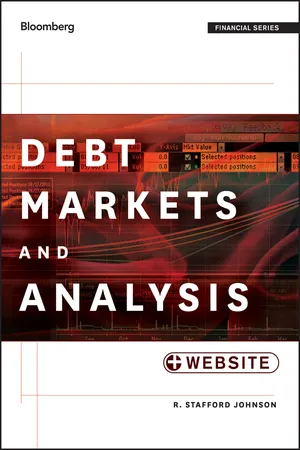Derivative of Exponential Function
The derivative of an exponential function, such as f(x) = e^x, is itself. In other words, the rate of change of an exponential function at any point is equal to the value of the function at that point. This property makes exponential functions unique and important in calculus and mathematical modeling.
5 Key excerpts on "Derivative of Exponential Function"
- Craig Adam(Author)
- 2011(Publication Date)
- Wiley(Publisher)
...However, there is one special base that has the additional and very useful property that its rate of change – the tangential gradient at any point on the graph of the function – is equal to the value of the function at that point. This “magic” base is the irrational number e = 2.718 …, which defines the exponential function: and the so-called decaying exponential: Sometimes this function is written with the value of the base replaced by the abbreviation of the word “exponential” which acts on the value of x, to give: It means exactly the same thing! The reason that the exponential function is so important is because its slope is always equal to the value of the function at that point. This is not a property of any other function of the form A x. This means that processes where rates of change depend on the value of the function, for example representing the amount of material, may be modelled using the exponential. 3.1.1 Algebraic manipulation of exponentials Expressions involving exponential functions may need to be re-arranged and the algebra of this can appear a scary task. However there are only two rules we need to remember and apply: when two exponentials are multiplied we add the exponents: when an exponential is raised to a power, we multiply the exponent by the power: There is also a third rule, which tells us that we cannot normally simplify the sum or difference of two exponential functions into a single exponential term! Worked Exercises Exercise (a) If y = e 4 x and z = e − x, simplify f(x) = yz 2. (b) Simplify f (x) = (e x + e −2 x) 2. Solutions (a) Substitution gives f (x) = e 4 x (e − x) 2 = e 4 x e −2 x = e (4−2) x = e 2 x. (b). Similarly: f (x) = (e x + e −2 x) 2 = e 2 x + 2 e x e −2 x + e −4 x = e 2 x + 2 e − x + e −4 x. Self-assessment exercises 1. If y = e x +2 and z = e −2 x evaluate and simplify the following: (a) f (x) = yz (b) (c) (d) 2...
- eBook - ePub
- R. Stafford Johnson(Author)
- 2013(Publication Date)
- Bloomberg Press(Publisher)
...Appendix B Uses of Exponents and Logarithms Exponential Functions An exponential function is one whose independent variable is an exponent. For example: where: y = dependent variable t = independent variable b = base (b > 1) In calculus, many exponential functions use as their base the irrational number 2.71828, denoted by the symbol e: An exponential function that uses e as its base is defined as a natural exponential function. For example: These functions also can be expressed as: In calculus, natural exponential functions have the useful property of being their own derivative. In addition to this mathematical property, e also has a finance meaning. Specifically, e is equal to the future value (FV) of $1 compounded continuously for one period at a nominal interest rate (R) of 100 percent. To see e as a future value, consider the future value of an investment of A dollars invested at an annual nominal rate of R for t years, and compounded m times per year. That is: (B.1) If we let A = $1, t = one year, and R = 100 percent, then the FV would be: (B.2) If the investment is compounded one time (m = 1), then the value of the $1 at end of the year will be $2; if it is compounded twice (m = 2), the end-of-year value will be $2.25; if it is compounded 100 times (m = 100), then the value will be 2.7048138. As m becomes large, the FV approaches the value of $2.71828. Thus, in the limit: (B.3) If A dollars are invested instead of $1, and the investment is made for t years instead of one year, then given a 100 percent interest rate the future value after t years would be: (B.4) Finally, if the nominal interest rate is different than 100 percent, then the FV is: (B.5) To prove Equation (B.5), rewrite Equation (B.1) as follows: (B.6) If we invert R/m in the inner term, we get: (B.7) The inner term takes the same form as Equation (B.2). As shown earlier, this term, in turn, approaches e as m approaches infinity...
- eBook - ePub
- Arsen Melkumian(Author)
- 2012(Publication Date)
- Routledge(Publisher)
...3 Exponential and logarithmic functions Logarithmic functions are indispensable in economic analysis as they can transform multiplicative relationships between economic variables into additive ones. In addition, economists often choose (for the sake of convenience) to optimize the natural log of an objective function instead of the objective function itself. Exponential functions are very useful when modeling the growth of a certain economic variable. For example, we can use exponential functions to model the growth of the population of a country. This chapter introduces logarithmic and exponential functions and closes with some Mathematica examples. 3.1 Logarithmic function Consider the following equation: In the equation above the base is equal to 3, and the exponent is equal to 5. The power to which 3 must be raised to yield 243 is called the logarithm (or log) to the base 3 of 243. So, logarithm to the base 3 of 243 is equal to 5: In general, if where a, B > 0 and a ≠ 1, and x ∈ ℝ, then we can write that For example, 2 5 = 32 implies that log to the base 2 of 32 equals 5 E XAMPLE 3.1 (a) log 2 1 = 0, since 2 raised to the power of 0 is 1. (b) log 7 7 = 1, since 7 raised to the power of 1 is 7. (c) log 10 = −1, since 10 raised to the power of −1 is. (d) log 3 81 = 4, since 3 raised to the power of 4 is 81. (e) log 5 (−25) is not defined, since −25 < 0. (f) log 12 1728 = 3, since 12 raised to the power of 3 is 1728. (g) log 5 = −2, since 5 needs to be raised to the power of −2 in order to get. Often economists work with logarithms to the base e, where e is the irrational number 2.718 … known as the exponential. Logarithms to the base e are referred to as natural logarithms. We can write either log e B or ln B to refer to the natural logarithm of B. Now, consider the function y = f (x) = ln x. The graph of y is given in Figure 3.1...
- eBook - ePub
Differentiating Instruction in Algebra 1
Ready-to-Use Activities for All Students (Grades 7-10)
- Kelli Jurek(Author)
- 2021(Publication Date)
- Routledge(Publisher)
...expressions, ➤ that exponential functions have a variable as the exponent, ➤ that exponential functions have growth and decay factors or multipliers, ➤ that exponential growth functions approach zero as x -values decrease, and ➤ that exponential decay functions approach zero as x -values increase. As a result of this unit, students will understand that: ➤ many real-life situations are modeled in exponential functions, and ➤ for an equation in the form of y = a (b) x, a represents the starting value, the value of b reflects either exponential decay or growth, and x is the time period. As a result of this unit, students will be able to: ➤ solve exponent functions and simplify expressions by applying the exponent rules; ➤ recognize and describe relationships in which variables grow and decay exponentially; ➤ describe how the values of a and b affect the graph of an equation in the form of y = a (b) x ; ➤ recognize exponential relationships in tables, graphs, and equations; and ➤. determine the growth and decay rates in exponential situations. Launch Scenarios ➤ After Erin graduated from college, she bought a house for $210,000. If it is estimated that real estate is appreciating in value by 5% per year, how much will the house be worth in 10 years when she plans to sell it? (Lesson 2) ➤ When Kevin's daughter is born, he and his wife invest $10,000 in an interest-bearing account for their daughter's education. If the account is earning 4% interest compounded quarterly, and no additional money is deposited into the account, how long will it take for the account to have $15,000? (Lesson 2) ➤ Katie bought a new car for $30,000. If its value is decreasing by 8% each year, how much will the truck be worth after 3 years? (Lesson 3) ➤ It is estimated that the human body can reduce caffeine in the bloodstream at a rate of 15% per hour...
- F. Xavier Malcata(Author)
- 2020(Publication Date)
- Wiley(Publisher)
...With regard to the relative error, one should divide both sides of Eq. (10.1) by y (or f, for that matter), according to (10.14) and then multiply and divide the right‐hand side by x, viz. (10.15) As will be proven later, the derivative of a logarithm is given by the derivative of its argument divided by the argument itself, so Eq. (10.15) can be rephrased as (10.16) hence, the relative error dx / x of the independent variable echoes upon dy / y via the logarithmic derivative, i.e. d ln f / d ln x. One may finally revisit Eq. (10.1) as (10.17) encompassing a composite function Φ of f { x } rather than f { x } itself, and resorting to chain differentiation (to be addressed shortly) – where cancellation of dx between numerator and denominator produces (10.18) in other words, Φ { f } may, for the sake of differentiation, be treated as a function of variable f (despite f being a function of x). By the same token, Eq. (10.7) suggests (10.19) where Ψ denotes any set of algebraic operations upon univariate functions f 1 { x }, f 2 { x }, …, f n { x } – which leads to (10.20) again after dropping dx from both numerator and denominator. Therefore, the differential of any function of functions may be calculated via direct application of the rules of differentiation, as long as the differentials of the corresponding constitutive functions are made available. 10.2 Derivative 10.2.1 Definition The derivative of a function f { x }, at a given point x 0, is defined as (10.21) graphically speaking, this corresponds to the limit of a straight line secant to the plot of f { x } at points with coordinates (x 0,) and (x 0 + h,), as emphasized in Fig. 10.2...




